As winter’s constellations start to fade and summer’s Milky Way hasn’t quite risen yet, we enter what’s known as galaxy season. While winter offers those amazing nebulae and summer brings the splendor of the Milky Way core, spring has its own thing going on with galaxies. From late March through June, the Milky Way is no longer visible, giving us clear views of thousands of distant galaxies that are great spring astrophotography targets.
Spring astrophotography is synonymous with galaxy season. You may have heard both phrases used often, but they refer to the same thing. In this post, I’ll discuss some deep-sky targets that are spring essentials. I’ll divide this into early and late spring because they’ll be at their highest point in the sky at optimal imaging times (usually between 9 PM and 2 AM on the East Coast of the U.S. for me).
As you may know if you’ve read posts on this website, I live only 14 miles from New York City in a busy suburb in New Jersey. As you can imagine, it’s a very light-polluted area, and galaxy season has always been something I avoid. It’s also extremely rainy here in the spring, and the chances for a clear night are slim. Lastly, the time I have to obtain these targets is on the uncomfortable side, as I can’t go out until about 9-10 PM to start shooting, and then I usually bring the whole rig in about midnight when I need to go to bed! The same holds for early summer targets, but those are traditionally globular clusters, which only require 3-4 hours of data.
My point is that I haven’t done much shooting during galaxy season. I’ve only shot M81 and M82 (featured below) and NGC 2903. I was hoping to shoot M51 this year as I just purchased a Celestron Edge HD 8, my first SCT. However, it took me three nights just to get the Edge HD 8 running properly. I’m not familiar with collimation, and wow–what a pain in the ass it is! The off-axis guider and reducer also gave me headaches. Besides those 3 nights, the rest of the spring has been a wash here. No clear skies, and it’s almost over. I’m hoping to squeeze in 1 target at least, but for now, Telescope.Live data will need to do. Most of the images below were created from Telescope.Live data and I processed them myself in Pixinsight. It’s been a good exercise to keep my galaxy processing skills sharp.
I hope you find this page helpful as I originally created it for myself as a guide of what to take when I got my Celestron Edge HD 8.
Early Spring Astrophotography Targets (March – April)
M81 & M82: Bode’s and Cigar Galaxies
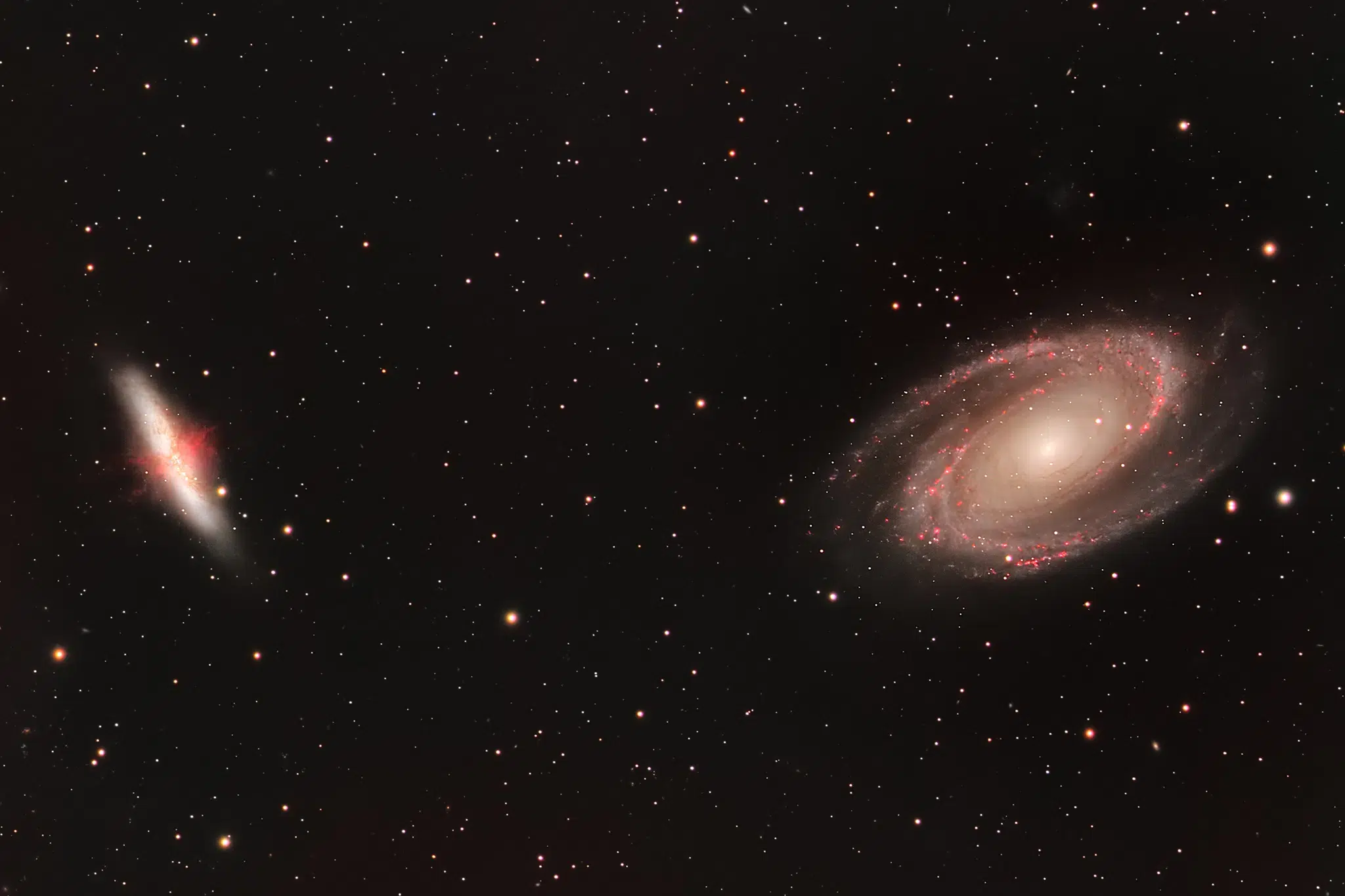
This galactic pair is one of the most accessible targets for beginning astrophotographers. M81 shows a perfect spiral structure, while M82 appears edge-on with dramatic dust lanes and reddish outflows from an intense burst of star formation. I captured this pair with 13 hours of integration, including some Ha data to bring out those outflows in M82. I also recently “remastered” this as I originally developed this photo in 2023, and my skills have improved immensely. You can see my full post about imaging this galaxy pair here.
NGC 2903

People often overlook NGC 2903 in favor of the more famous Leo Triplet, but it deserves way more attention. This barred spiral galaxy sits at the “lion’s chin” in Leo and shows beautiful structure with moderate exposure times. I shot this with only 6 hours of data, which shows you don’t need excessive integration time to get a good result, but this could be a lot better with more data. At magnitude 9.0, it’s bright enough for detection in small telescopes, but you’ll need longer exposures to pull out all the details. Check out my detailed post about this galaxy here.
M51: The Whirlpool Galaxy
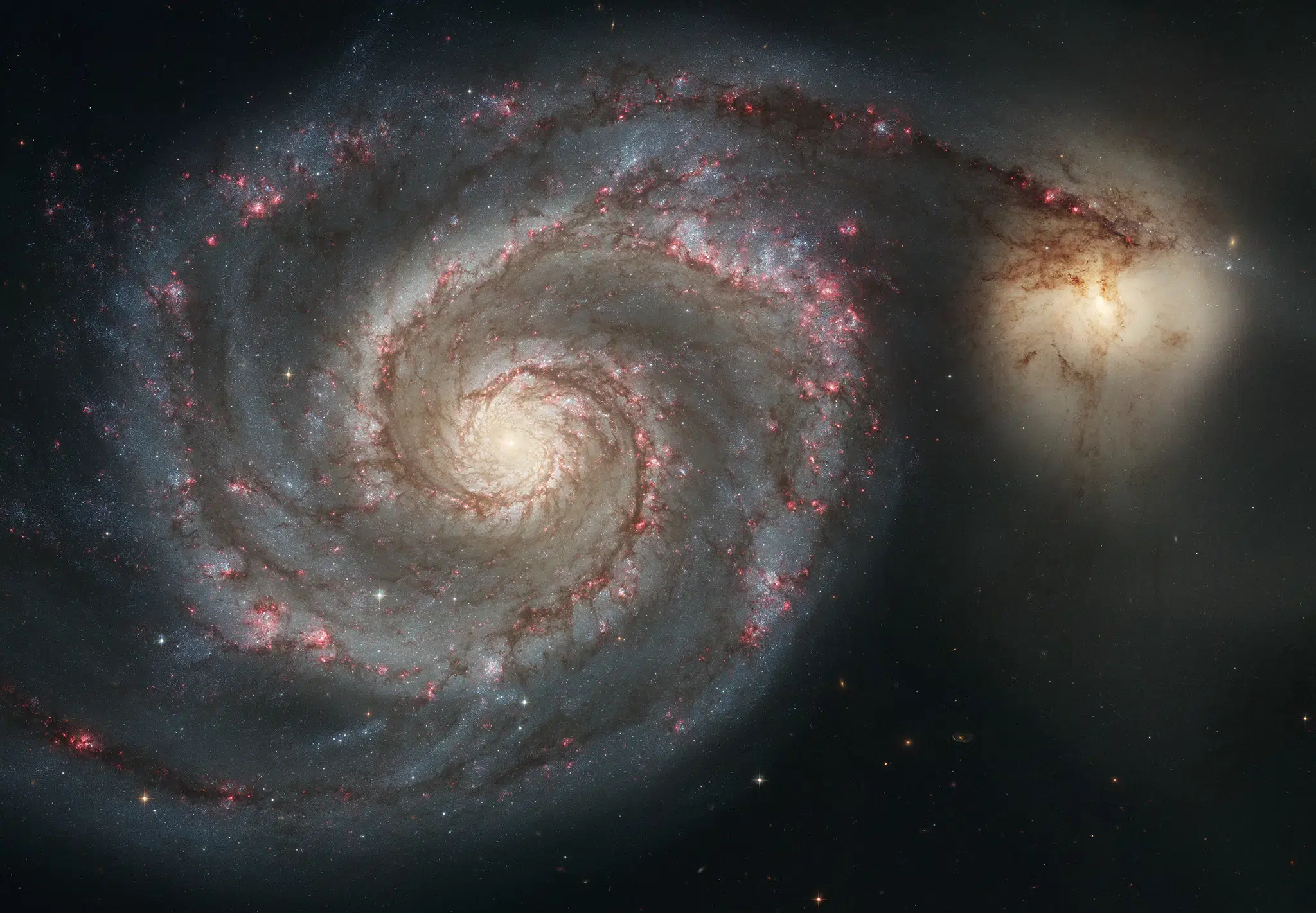
The Whirlpool is probably what most people imagine when they think “spiral galaxy.” It’s a perfect face-on spiral with well-defined arms, and it’s actively interacting with a smaller companion galaxy, NGC 5195. This interaction creates that bridge of material between them and triggers waves of star formation visible as blue knots along the spiral arms.
The Leo Triplet: M65, M66, and NGC 3628

This is an easy multi-galaxy target that fits nicely in a single frame. M65 and M66 show their spiral structure at an angle, while NGC 3628 (the Hamburger Galaxy) appears edge-on with a prominent dust lane. You can frame this triplet with focal lengths between 500-1000mm making it a great target for beginner astrophotographers who usually start with smaller focal lengths.
For this photo, I grabbed the data for the Leo Triplet from Telescope.Live and processed it myself. What’s impressive about this data is that it’s only 1h 10m and looks better than the 13+ hours I spent on M81 and M82. It’s amazing what dark skies can do, especially during galaxy season.
Late Spring Astrophotography Targets (May – June)
M101: The Pinwheel Galaxy
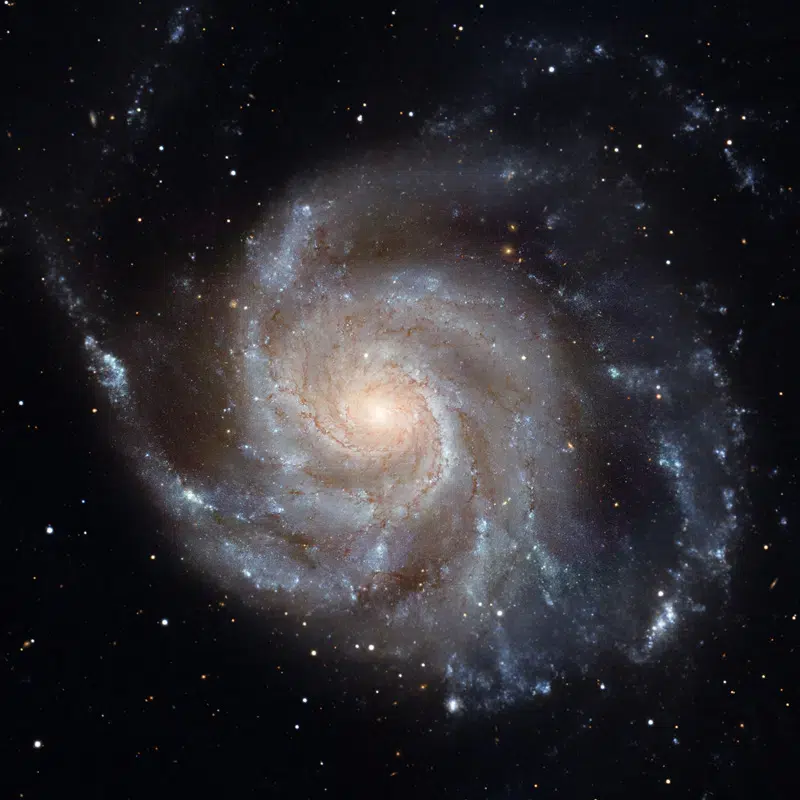
This face-on spiral in Ursa Major is huge but has low surface brightness, which makes it a bit more challenging. Its apparent diameter is nearly equal to that of the full Moon! It has an asymmetric structure due to past gravitational interactions, which makes it interesting scientifically as well as visually. This target definitely benefits from dark skies.
The Markarian Chain in the Virgo Cluster
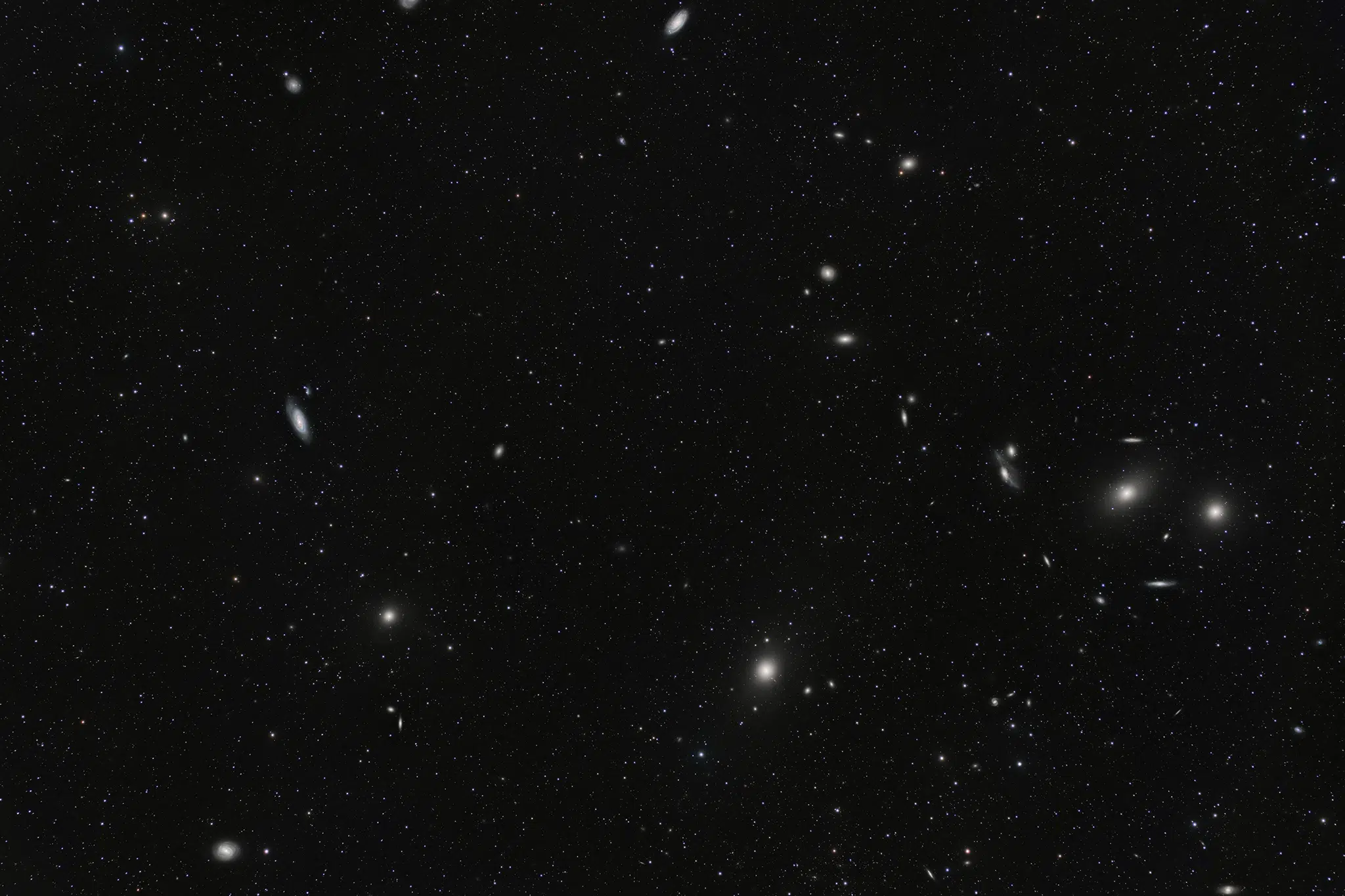
If you’re looking to capture multiple galaxies in one frame, nothing beats the Markarian Chain in the Virgo Cluster. This string of galaxies includes M84, M86, and several NGC objects, forming an arc that works perfectly with wider field setups. I’d use a telescope with a focal length between 400-800mm to frame the entire chain.
For this photo, I got the data from Telescope.Live and processed it myself in Pixinsight. This is one of Telescope.Live‘s observation bundles and has a total of 6 hours of data shot in dark skies.
NGC 4565: The Needle Galaxy
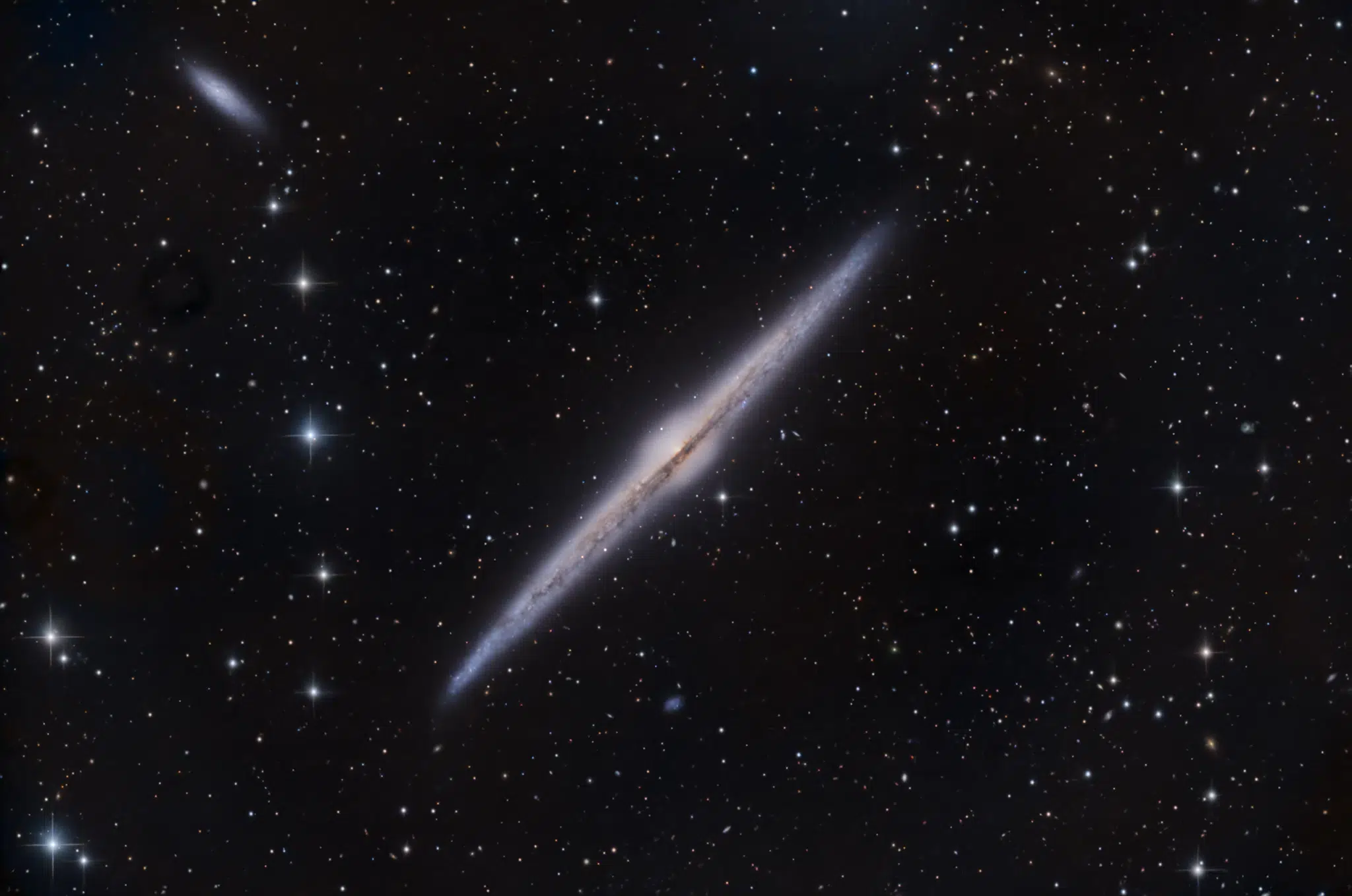
The Needle Galaxy in Coma Berenices is the perfect edge-on spiral. This razor-thin galaxy shows a distinct central bulge bisected by a dark dust lane. At magnitude 9.6, it’s bright enough for modest equipment, though its needle-like appearance looks best in telescopes with focal lengths over 1000mm.
I also got this data from Telescope Live and processed it myself in Pixinsight. This is a total of 5.6 hours of data. It looks amazing, and it was so easy to process despite a few calibration flaws.
M104: The Sombrero Galaxy
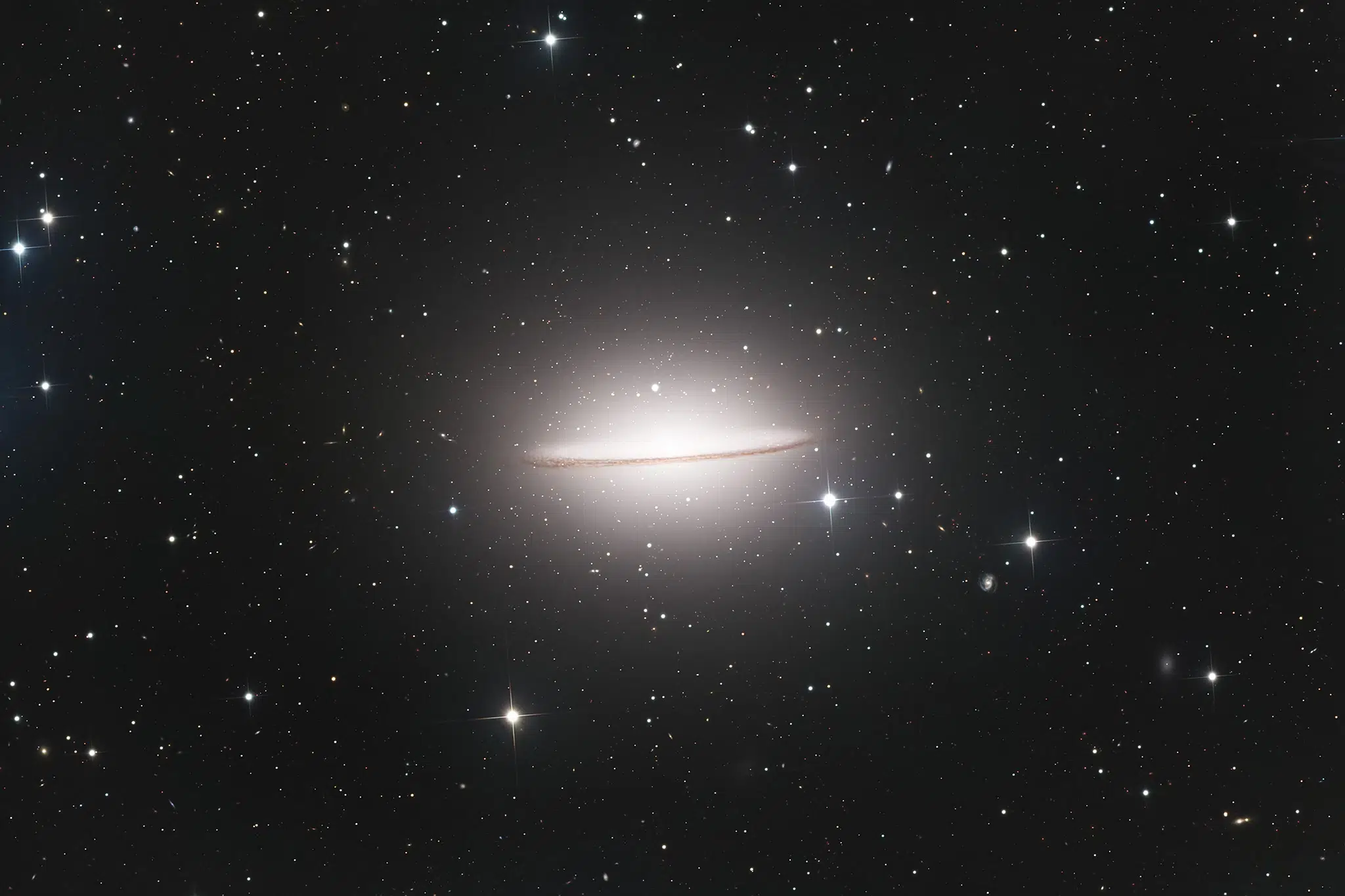
The Sombrero in Virgo is instantly recognizable with its unusually large central bulge and dramatic equatorial dust lane. At magnitude 8.0, it’s relatively bright, making it accessible even under light pollution. It is one of the most distinctive galaxies in the spring sky, although it does hang a little low in the southern sky, which may make it inaccessible for some people.
NGC 2359: Thor’s Helmet
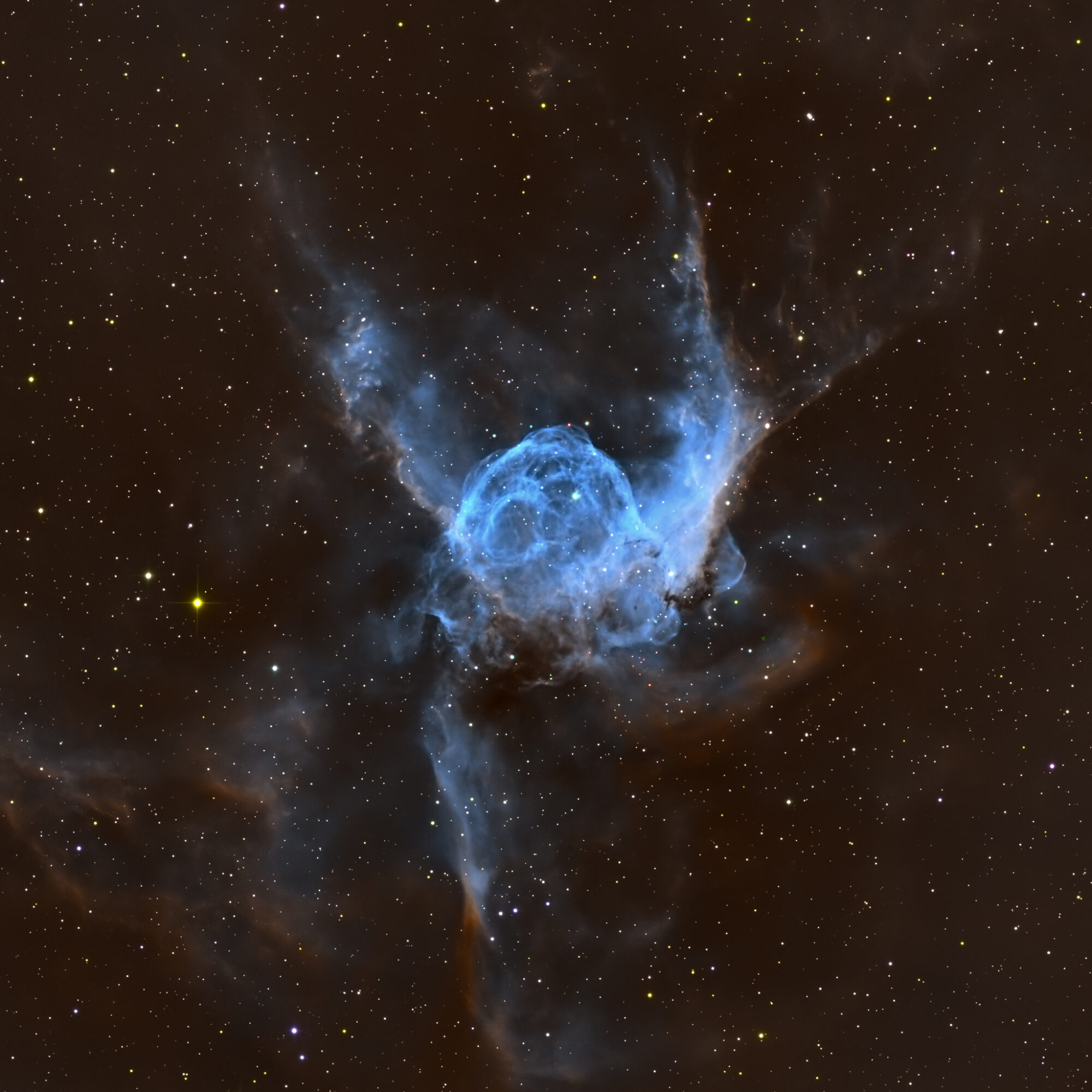
Is Thor’s Helmet a spring astrophotography target? Thor’s Helmet marks the end of the galaxy season and is usually considered a spring astrophotography target. Unlike the other targets here, this is a Wolf-Rayet bubble nebula within our Milky Way. It responds beautifully to narrowband imaging, particularly with the Ha and OIII filters.
The data above is from Telescope.Live and has a total of 13 hours of integration time, making this the longest integration time in any of the Telescope.Live bundles that I purchased.
I hope to capture this this year with my new Celestron Edge HD8.
More Spring Galaxy Targets
Here are some additional spring astrophotography targets that are definitely worth capturing:
NGC 4244: The Silver Needle Galaxy
Not to be confused with NGC 4565 (the Needle Galaxy), this edge-on spiral in Canes Venatici is fainter but has a beautiful, delicate structure. It’s another edge-on spiral that shows nice detail with longer exposures.
M63: The Sunflower Galaxy
This spiral galaxy in Canes Venatici shows an intricate spiral structure with many short arms, giving it a sunflower-like appearance. Its magnitude of 8.6 makes it accessible in smaller scopes, but you’ll need some decent aperture to resolve those flocculent spiral arms.
M94: The Cat’s Eye Galaxy
Located in Canes Venatici, M94 is a compact spiral with an extremely bright inner region surrounded by a fainter outer ring. It’s small but relatively bright at magnitude 8.2, making it a good target for smaller scopes.
NGC 5248
This is a beautiful face-on spiral galaxy in Boötes that doesn’t get enough attention. At magnitude 10.2, it’s fainter than some others on this list, but it reveals amazing spiral structure in longer exposures.
The Black Eye Galaxy (M64)
Located in Coma Berenices, this spiral galaxy gets its nickname from the distinctive dark dust lane across its bright nucleus. At magnitude 8.5, it’s bright enough for smaller scopes but really shines with more aperture.
Whale Galaxy & Hockey Stick Galaxy (NGC 4631 & NGC 4656)
This is a great pair of interacting galaxies in Canes Venatici. NGC 4631 (the Whale) is an edge-on spiral, while NGC 4656 (the Hockey Stick) has been distorted by gravitational interaction into its distinctive shape.
Equipment for Galaxy Season Photography
Telescopes
Galaxy season is when having a large telescope and large aperture pays off. While I’ve captured galaxies with my AT115EDT at 805mm, they still appear relatively small in the frame. For serious galaxy work, you need something like the Celestron Edge HD 8 or better, which I just purchased. Even the Celestron Edge HD 8 at f7 with a reducer is not great as galaxies have very faint details that are hard to capture without a larger aperture or more integration time. A large Newtonian at 1,000mm and f4 or better would be a good balance between reach and aperture for galaxy season. However, the mount you will need to handle a beast like that will be expensive.
Here’s a general rule of thumb regarding telescope focal length for galaxies:
- 400-800mm: Good for larger galaxy groups (Markarian Chain, M81/M82 pair)
- 800-1000mm: Works for medium galaxies (M51, M101, Leo Triplet)
- 1000mm+: Ideal for smaller galaxies and bringing out detail in all galaxies
Cameras
Galaxies are broadband targets, so unlike the nebulae of winter and summer, you don’t necessarily need a mono camera with filters. A good color camera with low read noise can work great. However, I love mono cameras and shooting LRGB is great because you usually shoot 1 hour each of R,G, and B and then the rest of the time is in luminance.
Dark Skies
Here’s something else you need: dark skies. Many galaxies are faint and take hours to bring out the details, even under good conditions. If you live in a light-polluted New York City suburb like I do, shooting the fainter galaxies may not be feasible. I’ve largely avoided galaxies due to the light pollution issue, but I’ve had some nice results with M81 & M82 and M33.
If you are also dealing with light pollution, focus on the brighter galaxies (magnitude 8-9) and be prepared for longer integration times, especially if you shoot at f7, which most people do with larger telescopes.
Planning Your Spring Astrophotography Imaging Season
With all these targets available, here’s how I approach planning:
- Map your targets by constellation: Start with Leo and Ursa Major targets in early spring, then move to Virgo and Coma Berenices as the season advances.
- Match equipment to targets: Use shorter focal lengths for galaxy groups like the Markarian Chain, and longer focal lengths for detail in smaller galaxies like the Needle. You can use Telescopious to simulate how a target looks with your equipment.
- Don’t forget the Moon: Plan your imaging sessions around new moon periods for the best results with these faint targets. Although workable, the Moon can significantly reduce the signal you get from galaxies.
Spring’s galaxy bounty gives you plenty to work with while waiting for summer’s nebulae to rise. Even though a Schmidt-Cassegrain (SCT) is recommended for galaxy season, you can capture impressive views of these distant universes even with smaller scopes like my Astro-Tech AT115EDT or any modest refractor. And remember, even familiar targets can reveal new details with more integration time or improved processing techniques.
Clear Skies!
P.S. I’ve also made great lists for the summer astrophotography targets and winter astrophotography targets, feel free to check those out.




This is one of the clearest explanations I’ve seen. Thanks!